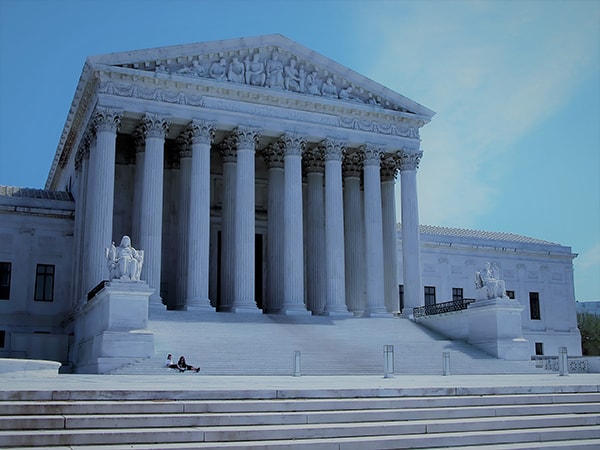Ideal Federal Appeal Lawyers: Achieving Justice in Federal Appeals
Ideal Federal Appeal Lawyers: Achieving Justice in Federal Appeals
Blog Article
Debunking the Process of Federal Appeals: What You Need to Know
Navigating the elaborate world of government charms can frequently appear like passing through undiscovered waters for those unknown with the procedure. Recognizing the subtleties of appellate court territory, the details of submitting a notice of allure, offering an engaging quick, and making an influential oral disagreement are vital components that can considerably influence the end result of a case. By unwinding the layers of intricacy bordering federal charms, people can acquire a more clear understanding into the devices that regulate this essential stage of the lawful system.
Comprehending Federal Appeals Process
Diving into the detailed world of the federal charms procedure unveils a organized and systematic journey through the judicial system - federal appeal attorneys in kentucky. Federal allures work as an important mechanism for evaluating choices made by reduced courts. Comprehending this process is crucial for any person associated with legal proceedings at the federal degree
The process typically starts with a party disappointed with a lower court's ruling submitting a notice of charm. This triggers an evaluation by a greater court, where a panel of courts analyzes the lawful arguments presented by both events. Briefs laying out the lawful reasoning behind each celebration's placement are sent, and dental debates may be heard to clear up complicated issues.
The appellate court's decision is based upon an extensive assessment of the lower court's process and the arguments offered. The judges do not concentrate but review facts on whether lawful errors occurred that impacted the lower court's choice. Once the appellate court reaches a decision, it can attest, reverse, remand, or modify the reduced court's ruling, providing clarity and finality to the legal dispute. Understanding this procedure is essential for navigating the complexities of federal charms properly.
Appellate Court Territory Clarified

Appellate courts have territory over particular kinds of cases, generally those including legal mistakes, procedural issues, or inquiries of legislation instead of accurate conflicts. The jurisdiction of appellate courts is usually laid out in laws and legislations that regulate the court system. Understanding appellate court jurisdiction is critical for parties associated with the appeals procedure as it determines whether an instance is eligible for review and the level to which the appellate court can intervene in the reduced court's choice.
Declaring a Notice of Appeal
The first step in beginning the federal allures procedure involves filing a Notification of Charm with the suitable appellate court. arizona federal appellate lawyer. This crucial file officially alerts the court and the various other celebrations involved in the situation that the appealing event means to seek a testimonial of the lower court's choice. Filing a Notification of Appeal is a rigorous procedural demand that sets the appellate procedure moving
When preparing the Notice of Allure, it is vital to make certain compliance with the particular guidelines and standards of the pertinent appellate court. The paper needs to usually consist of info such as the situation name, the reduced court's name, the date of the judgment being appealed, and a concise declaration suggesting the premises for the allure.
Timeliness is important when filing a Notification of Allure. Missing the deadline for index submitting this document can cause the charm being dismissed, emphasizing the significance of timely and exact initiation of the allures process. It is a good idea to seek lawful advice to browse the intricacies of submitting a Notification of Allure effectively.
Rundown and Oral Argument
In the appellate process, providing written briefs and participating in oral disagreements play critical roles in advocating for the appealing party's setting before the appellate court. Briefs are extensive lawful records that lay out the events' arguments, legal authorities, and analysis supporting their placements. These created submissions offer the court with a comprehensive understanding of the truths of the instance, the pertinent legislation, and why the appealing celebration thinks the lower court's decision should be rescinded.
Following the entry and evaluation of the briefs, oral disagreements provide the parties a possibility to additional clarify their positions, deal with any kind of inquiries the appellate courts might have, and highlight bottom lines from their created briefs. Oral arguments are a chance for the lawyers to convince the judges through verbal campaigning for and feedbacks to questions from the bench.

Obtaining the Appellate Court Decision

Verdict
Understanding the appellate court territory, filing a notification of charm, preparing briefs, and providing dental debates are all essential parts of this process. Eventually, receiving the appellate court choice can provide clearness and resolution to lawful disputes.
As we advance from understanding the government allures process to studying the complexities of appellate court territory, a fundamental aspect comes to light concerning the authority and limitations of these higher courts in the lawful landscape. Appellate court territory refers to the extent of situations that a specific appellate court has the power to determine and review upon. Unlike test courts that listen to instances for the initial time, appellate courts are restricted to reviewing decisions made by lower courts. Comprehending appellate court territory is critical for parties involved in the allures procedure as it identifies whether a situation is qualified for testimonial and the level to which the appellate court can intervene in the reduced court's decision.
Whether the appellate court verifies, reverses, or remands the lower court's choice, recognizing the implications of the judgment is vital for all celebrations included in the appellate process.
Report this page